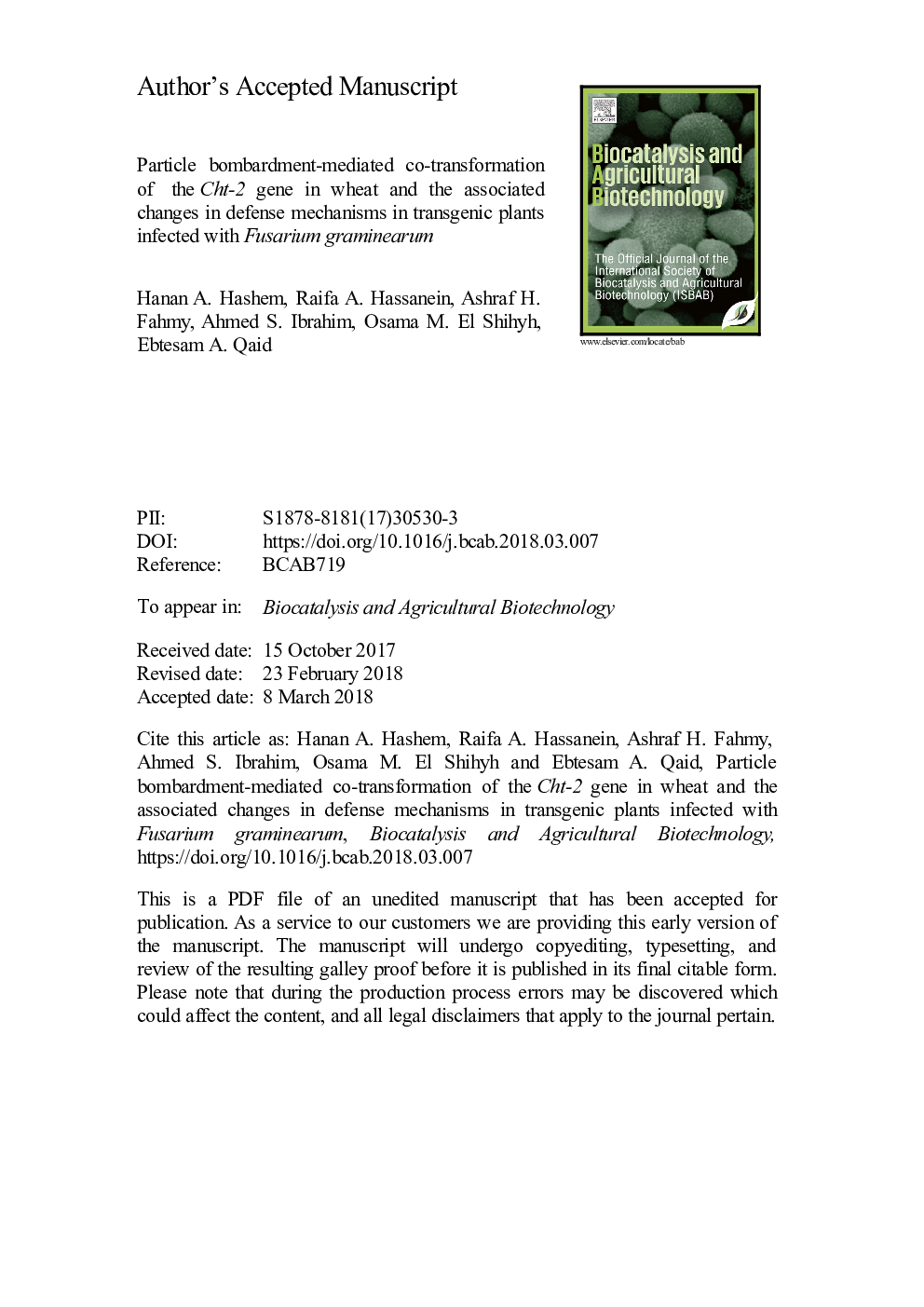| Article ID | Journal | Published Year | Pages | File Type |
|---|---|---|---|---|
| 8405831 | Biocatalysis and Agricultural Biotechnology | 2018 | 27 Pages |
Abstract
Fusarium graminearum is a major global pathogen of cereals and is considered the main causal agent of Fusarium head blight disease in wheat. Infection with F. graminearum causes a significant reduction in crop yield and quality; therefore, it is very important to improve wheat pathogen resistance. In the present study, the plasmid pAHCht-2 harboring the rice chitinase (Cht-2) gene for pathogen resistance and the plasmid pAB6 containing the gus reporter and bar selectable marker genes were used for genetic transformation of immature embryo-derived calli of the Egyptian wheat cultivar Giza 164 using particle bombardment. The presence and integration of transgenes were assessed by PCR analysis using specific primers for the Cht-2, bar and gus genes. The incorporation of the Cht-2 gene into the genome of the transformants was confirmed by dot-blot analyses. The transformation efficiency (number of transgenic plants/number of embryos) was 6.01%. Additionally, associated changes in defense mechanisms in the transgenic plants were investigated. The results showed variations in biochemical characteristics between transgenic and non-transgenic wheat lines (cv. Giza 164). The transgenic plants had significantly decreased total protein content, phenolic compounds and antioxidant enzyme activities (peroxidase and catalase), and significantly increased phenylalanine ammonia lyase and chitinase activities compared with non-transgenic plants under biotic stress conditions caused by F. graminearum infection. Our results show that activating a specific program of gene expression related to particular environmental stress conditions can reduce the cost of the stress on plant metabolism.
Related Topics
Life Sciences
Agricultural and Biological Sciences
Agricultural and Biological Sciences (General)
Authors
Hanan A. Hashem, Raifa A. Hassanein, Ashraf H. Fahmy, Ahmed S. Ibrahim, Osama M. El Shihyh, Ebtesam A. Qaid,
